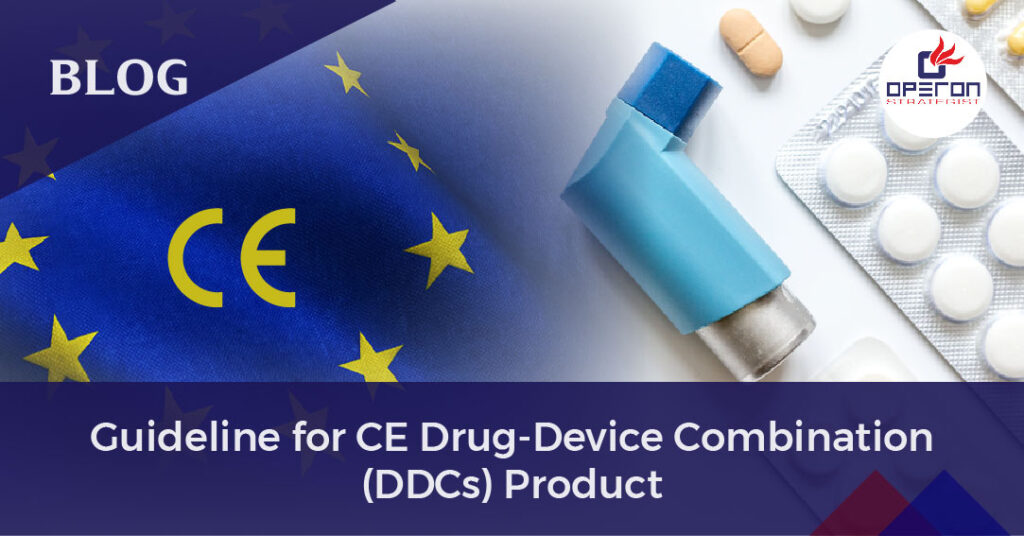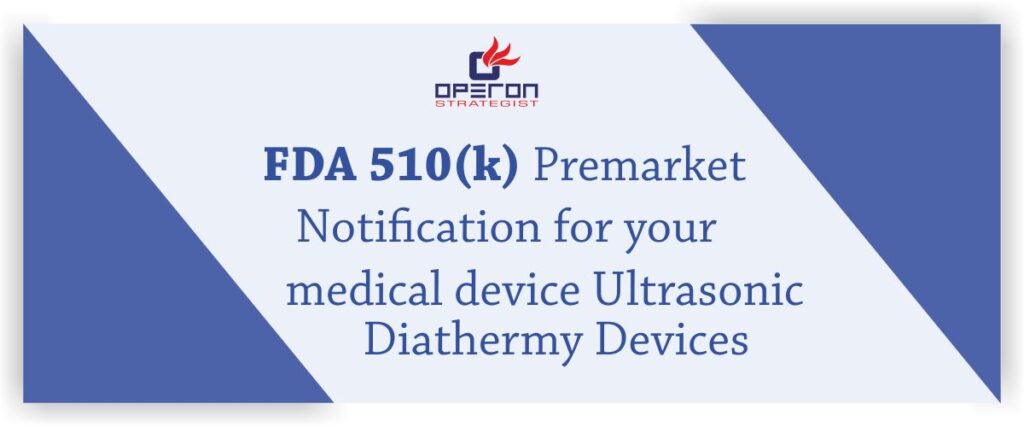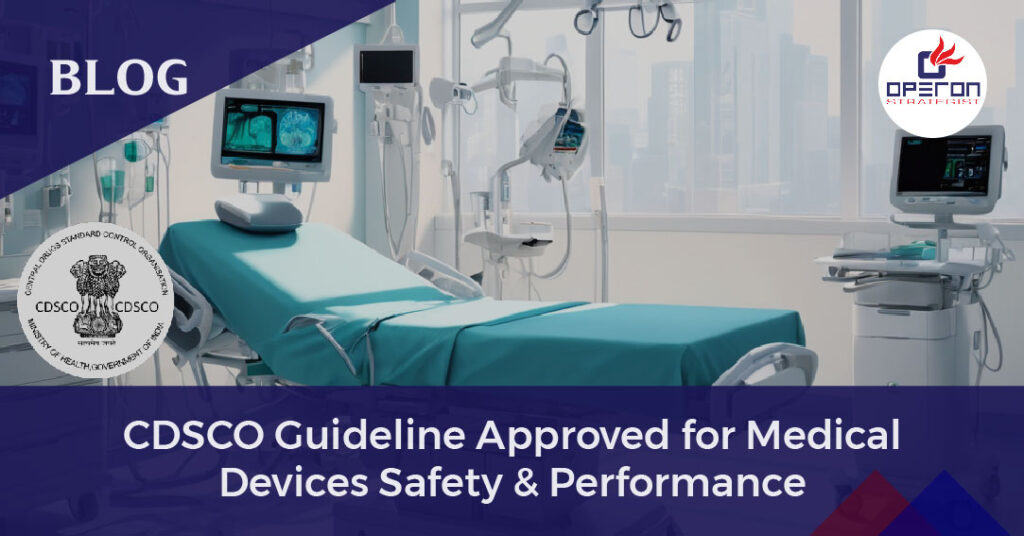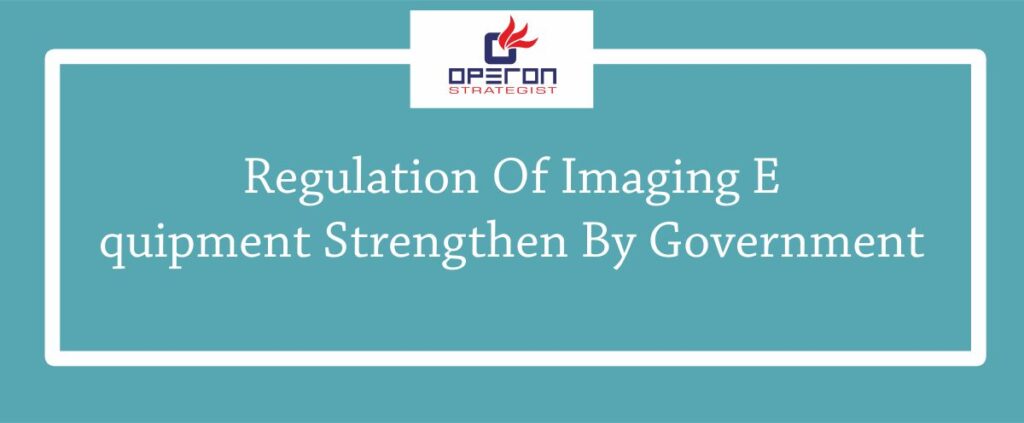Drug-device combinations (DDCs) are therapeutic and diagnostic items that mix medical devices, medicines, and/or biological components. Because these are claimed to achieve medication targeting, they are regarded as safer and more effective treatments for local administration and personalized therapy. Such technologies are seen as beneficial to individuals suffering from major health conditions such as cancer, heart disease, multiple sclerosis, and diabetes, among others.
Ex. Pre-filled syringe, Pen injector, Autoinjector, Metered dose inhaler, Drug-eluting stents, Catheter with antimicrobial coating, etc
Looking For a Medical Device Regulatory Consultant?
Let’s have a word about your next project
The Operon Strategist is your key to easily navigating FDA510 (k), MDA, MDR, and EU regulations. Contact us for consultation.
Drug-device combination products are emerging as a new dynamic in medical product development, regulatory approval, and business engagement, necessitating improved communication and collaboration. The development of new combination products and ensuring their timely and proper market access necessitates a specified system of interactions between manufacturers and regulatory bodies.
EU Regulation For Combination Medical Devices
The FDA specifically defines drug-device combination products in 21 CFR 3.2(e), however, the EU does not have a single definition in its regulatory framework. The EU regulates combination items as either medicines or medical devices. The European Medicines Agency (EMA) assesses the medicinal product part of a combination device, whereas Notified Bodies assess the device part. Notified Bodies are organizations appointed by the EU Commission to evaluate the conformity of medical devices before they are placed on the market.
In response to numerous requests for advice on combination device quality requirements, the EMA provided “Draft guidelines on quality requirements for medical devices in combination products,” which addressed the new obligations in Regulation (EU) 2017/745 on medical devices, specifically Article 117. This article requires that the marketing authorization application include a CE (Conformité Européenne) certificate or declaration of conformity for the device, or, in some situations, an opinion from a notified body (NB) on the item’s conformity.
Ema Guidelines For Drug-device Combination Products
This EMA recommendation applies to devices used for drug administration, dosage, and use. They may be integrated, co-packaged, or referenced in the drug’s product information but obtained separately. It specifies which information about the device must be submitted as part of the original marketing authorization application and later over the product’s lifecycle. It also includes a proposed template for the NB opinion on the device’s conformance to the applicable standard safety and overall performance standards set out in Regulation (EU) 2017/745. This guiding concept aims to enhance transparency and uniformity in regulatory filings, minimizing work for all stakeholders and ultimately improving impacted person protection.
The Regulatory Framework For Medical Device Incorporating Medicinal Substances As An ‘Integral Component’ Is Described In Article 1(8) Of MDR:
- Where the action of the medicinal substance is ancillary, the product is regulated as a medical device and ought to be CE marked. As the action of the medicinal product is considered ancillary, a systematic opinion needs to be provided from a medicines authority earlier than a notified body can issue a certificate for the combined product. Despite the fact that most of the people of digital developments are being driven and carried out inside the developed global, growing economies can be further left behind if they can not do development in regions so as to benefit them.
- Where the action of the medicinal substance is main, the combination product is regulated under the medicinal products framework. In this situation, the relevant general safety and performance requirements (GSPR) of the MDR apply to the device component.
The regulatory framework For Administration Devices Is Described In Article 1(9) MDR:
“(12) where a product is ruled by this directive, the marketing authorization dossier shall include, where available, the assessment of the evaluation of the conformity of the device element with the applicable general safety and overall performance requirements set out in annex i to that regulation contained inside the manufacturer’s European announcement of conformity or the relevant certificate issued by way of a notified body allowing the manufacturer to hitch. If the dossier does not include the outcomes of the conformity evaluation cited inside the first subparagraph and where the conformity assessment of the device, if used separately, the involvement of a notified body is required in accordance with regulation (ECU) 2017/745, the authority shall require the applicant to provide an opinion on the conformity of the tool part with the applicable general safety and overall performance requirements set out in annex i to that”
Impact Of MPD(Medicinal Product Directive) On MAA (Marketing Authorization Application)
with the changes enforced using the EU MDR, the MAA should consist of either a:
- CE certificates issued through a NB for the medical device component, or
- NBO (Notified body opinion) on the conformity of the device.
The first option would require medical device manufacturers to get CE marking through a product-specific conformity assessment method. The CE certificate would then need to be presented to the EMA via the MAA.
Alternative option: If a CE mark has not been awarded to the device component on its own, the maker must contact an NB and ask their opinion on the device’s compliance, and then submit the NBO report in the MAA to EMA.
The Authority Of Final Approval Of The Product Will Remain With The EMA:
This regulatory change primarily affects combination devices that are integrated, non-reusable, and whose major mode of action is due to the medication element. Naturally, such devices are classed as Class Is [sterile], Class IIa, Class IIb, or Class III and meant only for the specified combination. These must comply with the Annex I (MDR) GSPR but are not required to be regulated as CE-medical devices. Combination devices classified as Class I (non-sterile) do not require an NB opinion.
How Manufacturers can apply Article 117?
- Identify a NB intending to be EU MDR designated for your precise technology
- Investigate which GSPRs are applicable to your products
- Obtain data that demonstrates conformance to the applicable GSPRs
- Assemble Technical Documents to aid the medical device components
One of the key challenges for drug-device combination devices are associated with addressing human factors studies and studies in representative user populations, particularly applicable to patient administered drug-device combinations. Important consideration needs to be given to the new requirements for post-market surveillance while preparing for operation.
Operon strategist closely worked with different regulatory agencies for more than a decade. We are CE mark medical device certification consultants; we know how to classify the product and make a dossier as per classification which makes an error-free certification process. To avail our services do contact us or whatsapp us your requirement.
Author
Dr. Rupali Kale (Regulatory Head – Operon Strategist)
- adminhttps://operonstrategist.com/author/admin-2/
- adminhttps://operonstrategist.com/author/admin-2/
- adminhttps://operonstrategist.com/author/admin-2/
- adminhttps://operonstrategist.com/author/admin-2/




